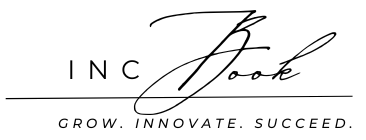Securing a business loan can be a daunting challenge, especially for entrepreneurs with high debt-to-income ratios. This financial metric, which compares an individual’s debt obligations to their income, often raises red flags for traditional lenders. However, various financing options can still provide crucial support for business owners in this situation. Understanding these options and their specific terms can help you navigate the loan landscape and find a suitable solution for your business needs. This guide explores different loan types available to those with high debt-to-income ratios, offering detailed insights into each option.
Hint: make it to the end for Insider Tips!
| Loans for Business Owners with High Debt-to-Income Ratios | |||||||
|---|---|---|---|---|---|---|---|
| Loan Type | Interest Rate | Loan Term | Repayment Options | Down Payment | Eligibility Criteria | Processing Time | Additional Notes |
| Alternative Lenders | 7.0% – 15.0% APR | 1 – 5 years | Monthly, Weekly | Varies | Higher interest rates, flexible requirements | 1 – 2 weeks | Often faster approval but higher costs |
| Merchant Cash Advances | 20.0% – 60.0% APR | 6 – 18 months | Daily, Weekly | None | High sales volume, strong business performance | 3 – 5 days | Repayments are tied to sales volume |
| Secured Business Loans | 5.0% – 12.0% APR | 2 – 7 years | Monthly | 20% – 30% | Collateral required, detailed financials | 2 – 4 weeks | Lower rates with collateral, but higher risk |
| Peer-to-Peer Lending | 6.0% – 14.0% APR | 1 – 5 years | Monthly | Varies | Creditworthiness, business plan | 1 – 3 weeks | Potentially more flexible terms |
| Microloans | 8.0% – 18.0% APR | 1 – 3 years | Monthly | 10% – 20% | Small loan amounts, community-based organizations | 1 – 2 weeks | Often targeted at startups and underserved communities |
| Government-Backed Loans | 5.0% – 10.0% APR | 5 – 10 years | Monthly | Varies | Specific programs for high-debt situations | 4 – 6 weeks | Lower rates, but may have stricter requirements |
Insider Tips
Consider Revenue-Based Financing: Revenue-based financing allows you to repay the loan based on a percentage of your monthly revenue. This can be ideal if your debt-to-income ratio is high, as payments adjust with your cash flow, reducing the strain during slower periods.
Leverage Invoice Financing: If your business generates invoices with extended payment terms, invoice financing can provide immediate cash flow by borrowing against your outstanding invoices. This option can improve your debt-to-income ratio by converting receivables into working capital.
Explore Peer-to-Peer Lending Platforms: Peer-to-peer (P2P) lending platforms connect borrowers with individual investors. These platforms may offer more flexible terms and be more willing to consider your business’s overall potential rather than just traditional credit metrics.
Utilize Collateral to Secure Better Terms: Offering collateral, such as business assets or personal property, can improve your chances of securing a loan despite a high debt-to-income ratio. Collateral reduces the lender’s risk and might lead to better loan terms.
Negotiate for a Personal Guarantee: For some high-risk loans, offering a personal guarantee can sometimes make a lender more comfortable extending credit. This shows your commitment and willingness to back the loan personally, which can be a positive factor in negotiations.
Seek Out Niche Lenders Specializing in High-Debt Situations: Some lenders specialize in working with businesses that have high debt-to-income ratios. These lenders understand the nuances of your situation and may offer tailored solutions or more favorable terms.
Improve Your Business Credit Score: Take steps to enhance your business credit score by paying bills on time, reducing outstanding debts, and maintaining low credit utilization. A stronger credit score can sometimes offset the impact of a high debt-to-income ratio.
Consider Debt Consolidation Loans: If high debt-to-income ratios are primarily due to multiple existing debts, a debt consolidation loan might help. By consolidating your debts into a single loan, you can simplify payments and potentially secure better loan terms.
Analyze Loan Structuring Options: Some lenders offer the option to structure your loan with varying interest rates or payment schedules. Investigate if you can negotiate terms that align with your cash flow patterns to make repayments more manageable.
Leverage Financial Projections: Provide detailed financial projections and business plans to lenders to demonstrate your ability to manage and eventually reduce your debt. Strong projections can help offset concerns about your current debt-to-income ratio.
Tap into Industry-Specific Grants and Loans: Research grants or loans specifically designed for your industry. Some sectors have targeted financial assistance programs that may be more lenient with debt-to-income ratios and offer favorable terms.
Utilize a Financial Broker Specializing in High-Debt Cases: Engage a financial broker who has experience working with high-debt-to-income ratio clients. They can leverage their network and expertise to find suitable lenders and negotiate terms that fit your unique situation.
Apply for Microloans: Microloans are smaller loans typically offered by nonprofit organizations or community lenders. These loans are often designed to help businesses with limited access to traditional financing, including those with high debt-to-income ratios.
Showcase Improved Cash Flow Projections: When applying for a loan, present detailed cash flow projections that demonstrate how your business plans to improve its financial situation. Lenders may be more willing to offer credit if they see a clear plan for increasing revenue and managing debt.
Explore Flexible Payment Plans from Non-Traditional Lenders: Look for non-traditional lenders who offer flexible repayment structures, such as interest-only payments for the first few months or adjustable payment schedules. These options can help manage cash flow more effectively while dealing with a high debt-to-income ratio.



